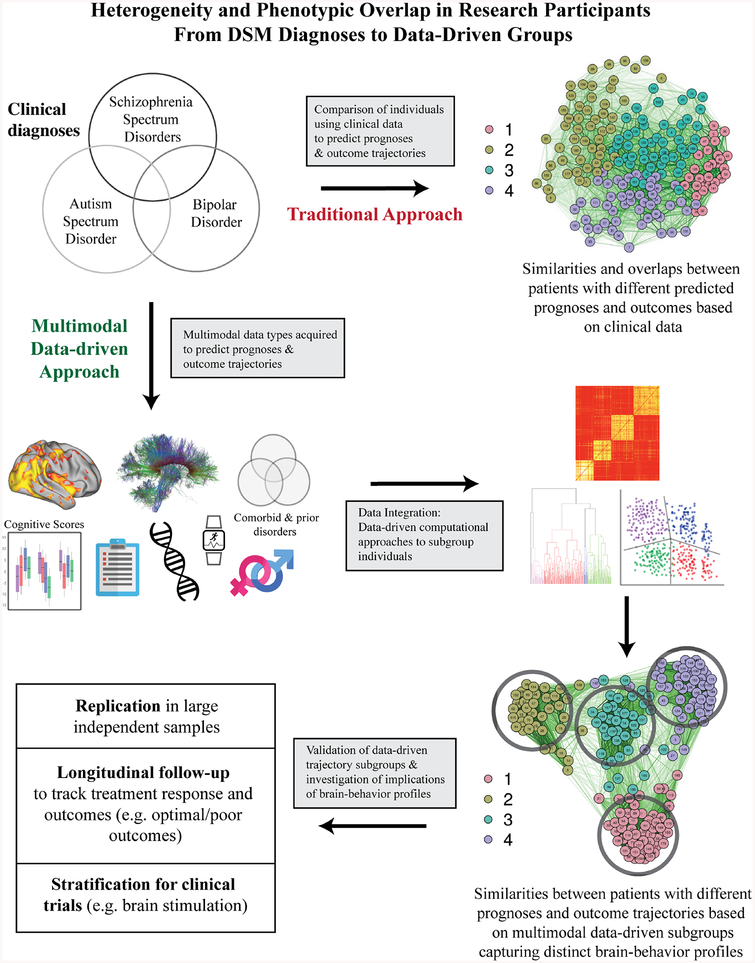Figure 1.
Schematic comparing a more traditional approach with a multimodal data-driven approach reconsidering and capitalizing on heterogeneity in psychosis toward clinical impact. Such an approach as the latter can take into account multi-level phenotypic and biological data, then use data-driven techniques to reconfigure diagnostic groups into ones where individuals are similar to each other based on information within and between levels of data. These new groups must then be tested for longitudinal stability, reliability, and validity. Ultimately, whether these groups are more closely linked to prognostic and therapeutic outcomes compared to current DSM groups will determine their utility.

